Creating a home gym in your garage or basement can be a game-changer, saving both time and money while giving you a personal space to focus on your fitness goals.
Over the years, Ive helped countless clients transform their underused garages and basements into fully functional fitness areas tailored to their needs. Whether youre aiming for a compact workout corner or a fully equipped gym setup, there are endless possibilities to make the most of these spaces, no matter the size or budget.
In this guide, Ill cover everything from essential equipment and layout strategies to practical storage solutions that keep your workout space organized and safe. Ill also dive into important considerations like ventilation and lighting, which can significantly impact the quality of your workouts and overall gym experience. Plus, Ill share some tips on soundproofing and flooring options to protect your space and minimize noiseespecially crucial if youre working out over living areas.
By the end, youll have a roadmap to building a garage gym or basement gym that fits your unique needs and keeps you motivated. Investing in a home gym setup doesnt have to break the bank, and with the right planning, youll be well on your way to achieving your fitness goals right from the comfort of home.
Find Daily Home Gym Deals on Amazon

50 Creative Home gym ideas for all basement sizes
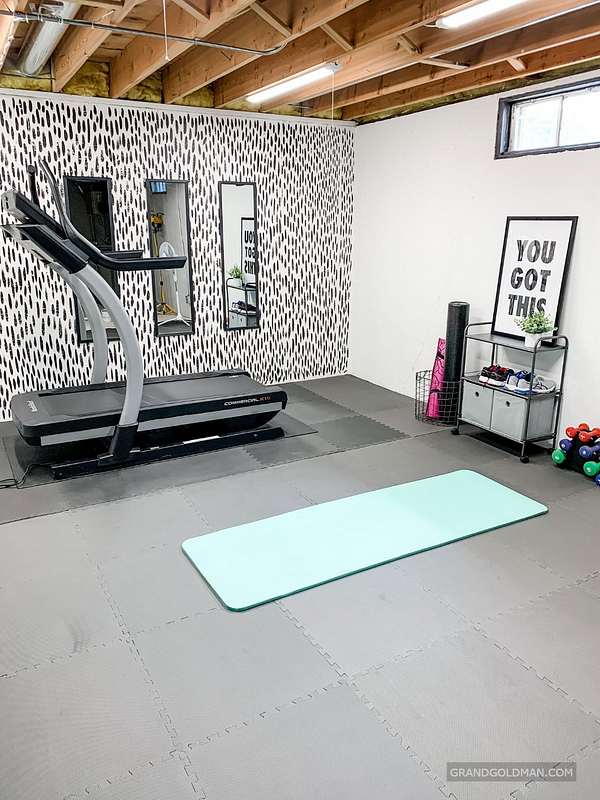
RETROSPEC Solana Yoga Mat 1/2" Thick - CHECK PRICE
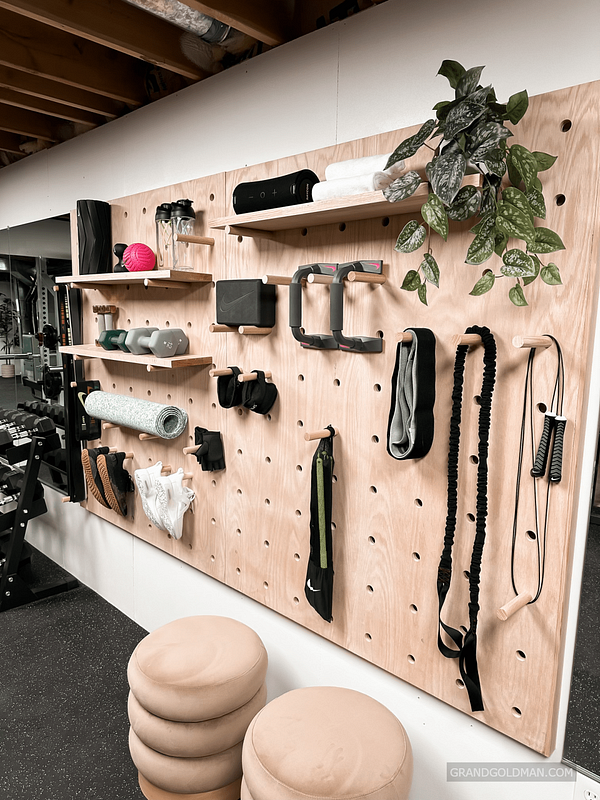
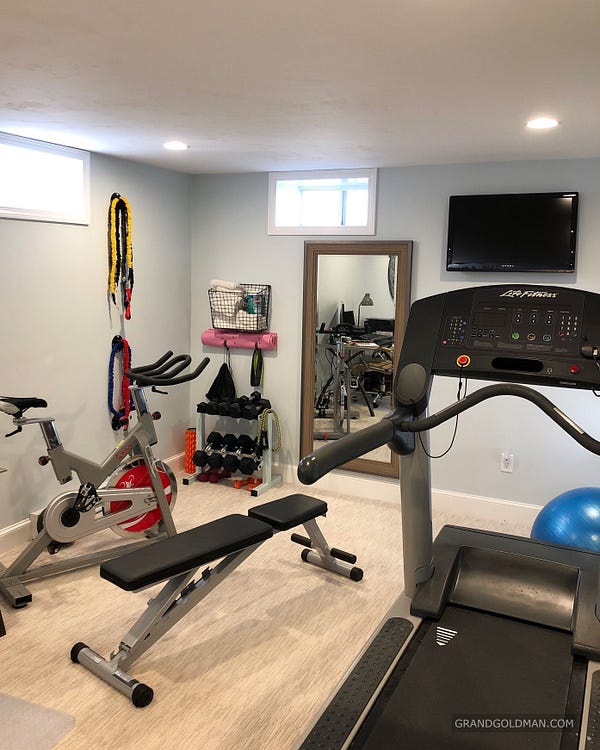


CAP Barbell FM-8000F Deluxe Power Rack - CHECK PRICE
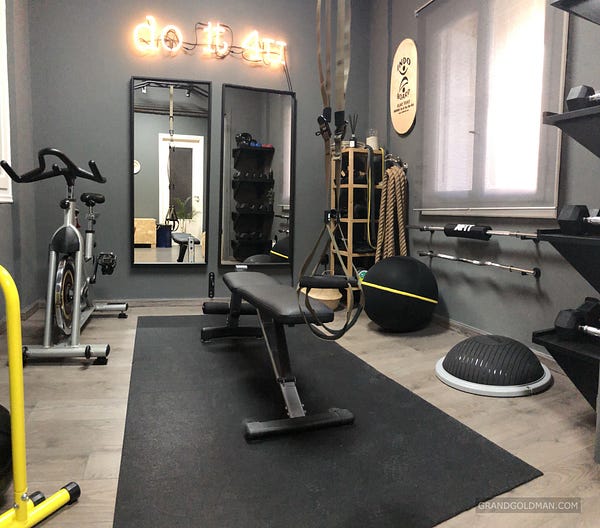
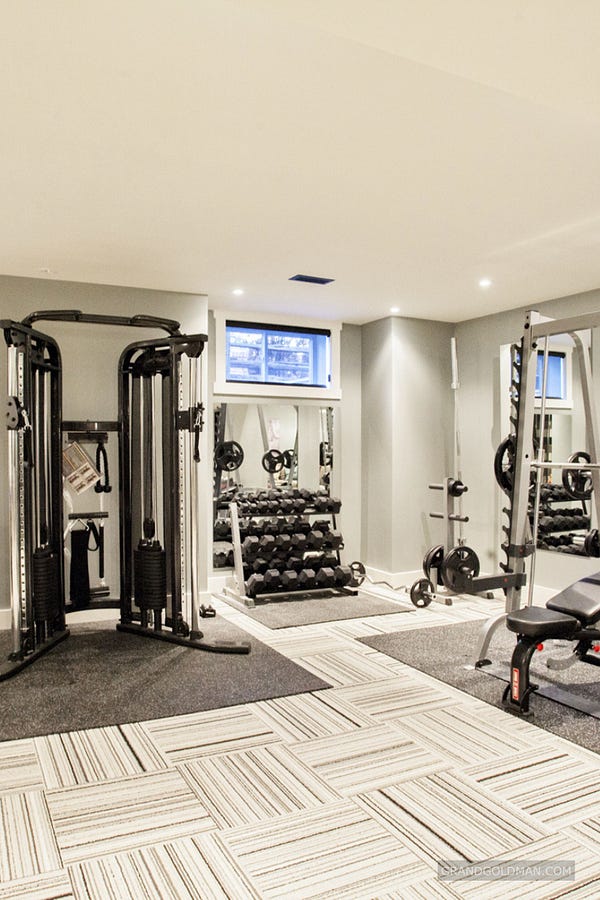
XMARK Functional Trainer - CHECK PRICE
Rustic Home Decor Ideas | DIY Home Decor Ideas | Living Room Home Decor Ideas | Kitchen Wall Cabinet Ideas | Wall Decor Ideas | Gallery Wall Ideas | Board and Batten Walls | Accent Wall Ideas | Picture Wall Ideas for Bedroom | Dopamine Decor Ideas

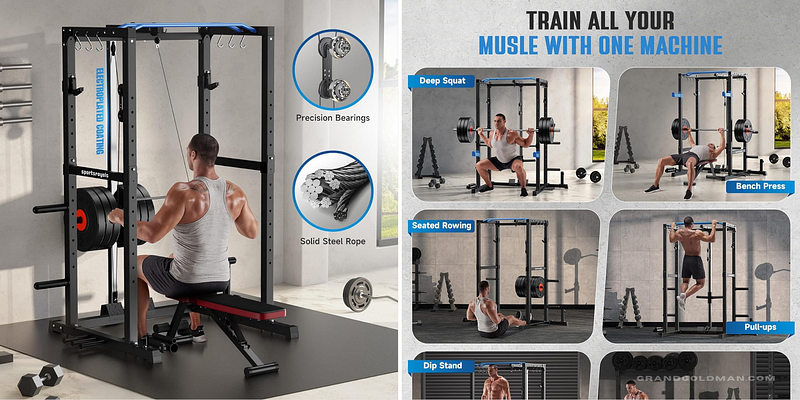
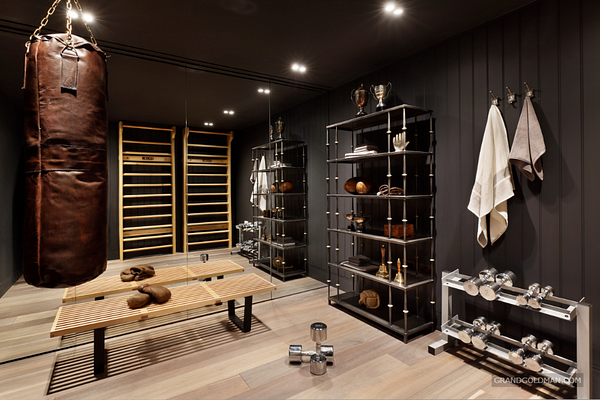


XL Dumbbell Rack - CHECK PRICE

Marcy Weight Storage OrganizerCHECK PRICE
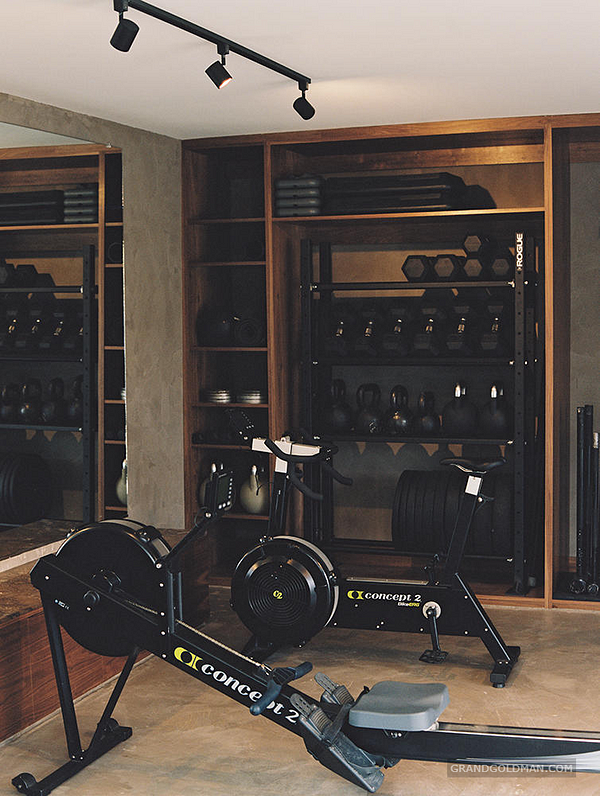
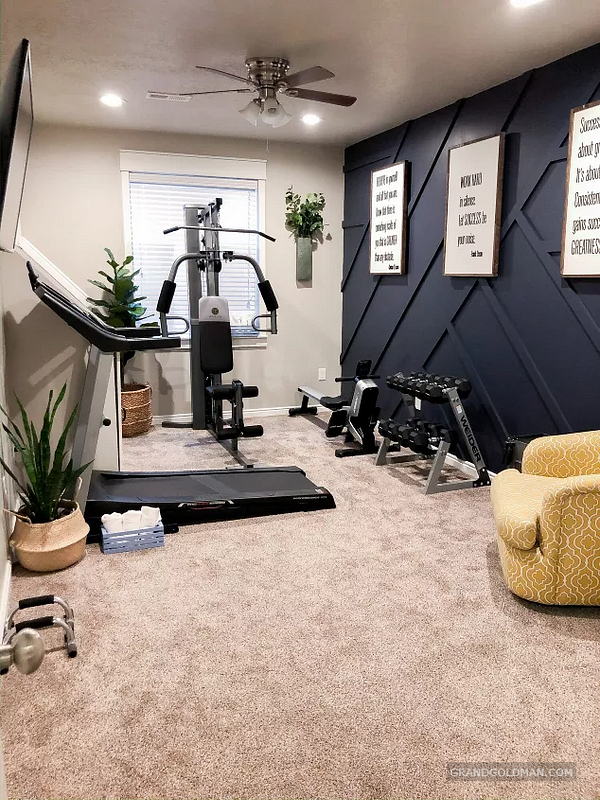

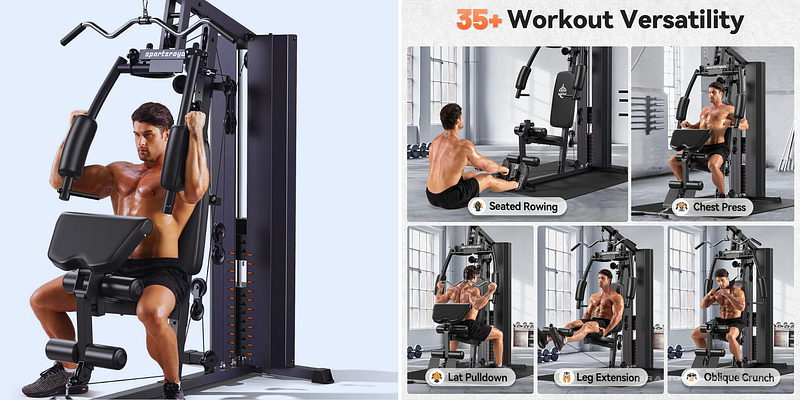
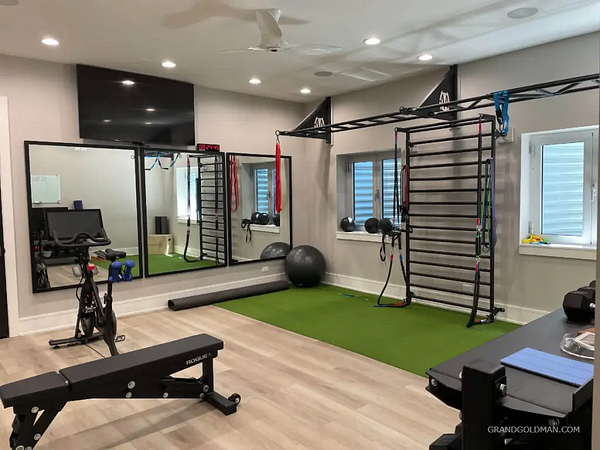

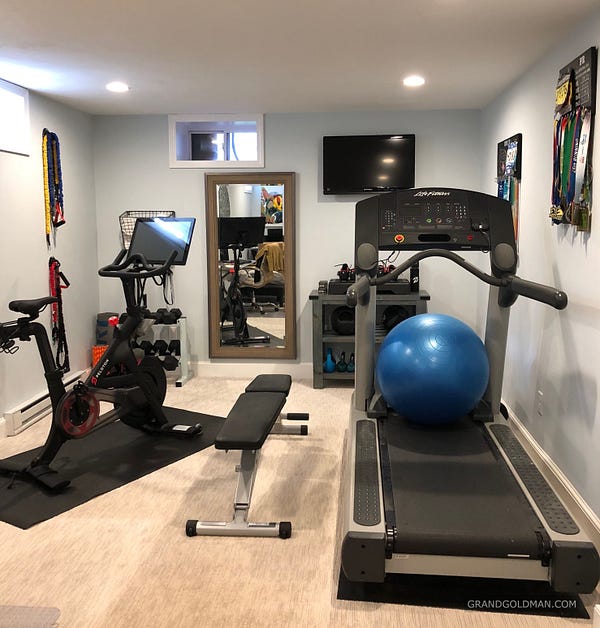

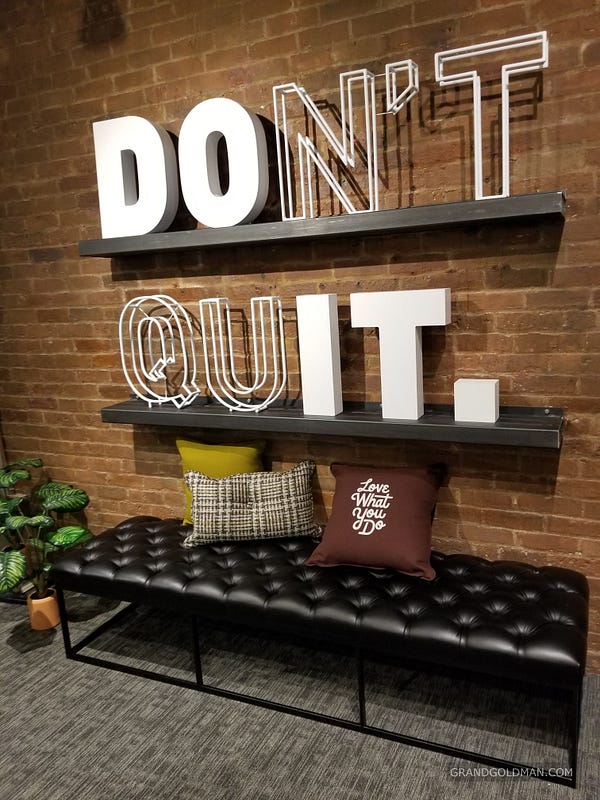

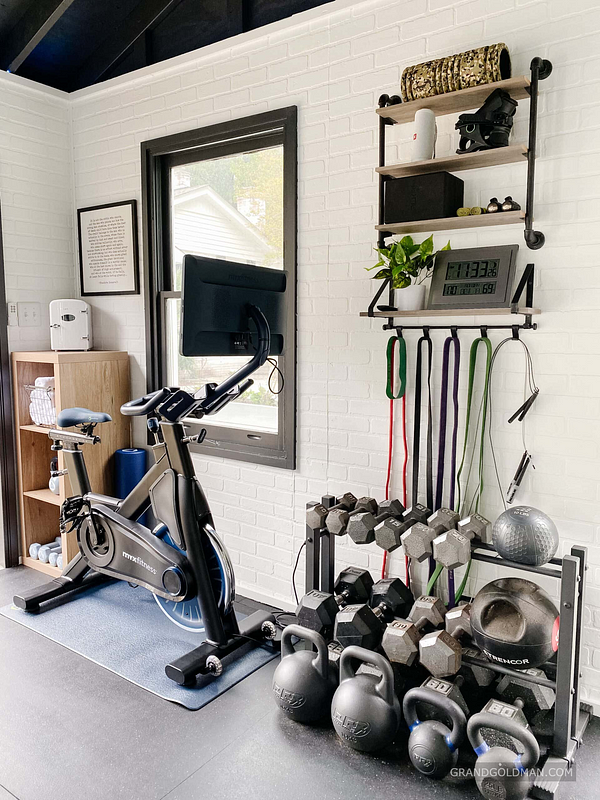
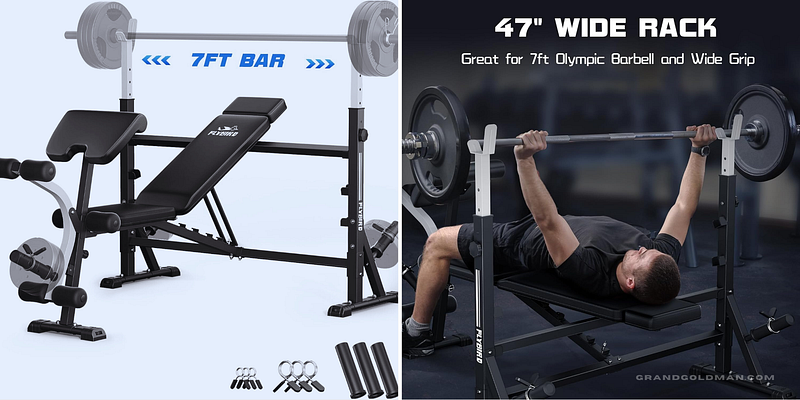
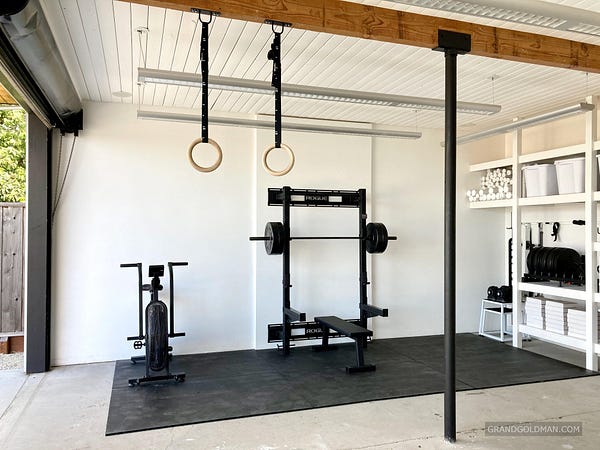
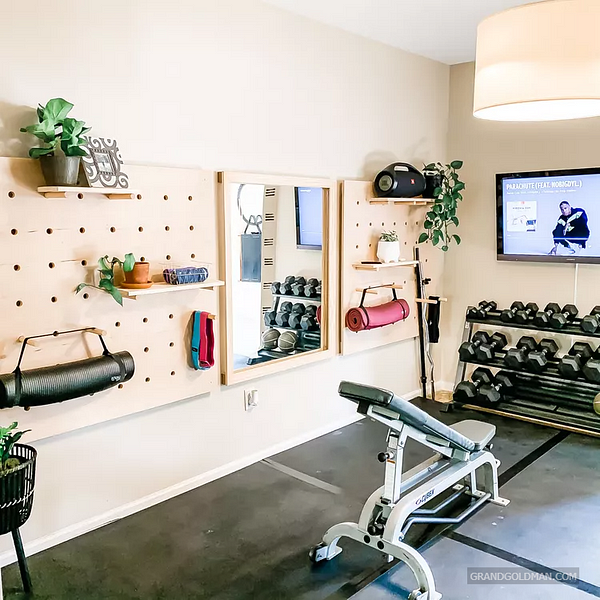

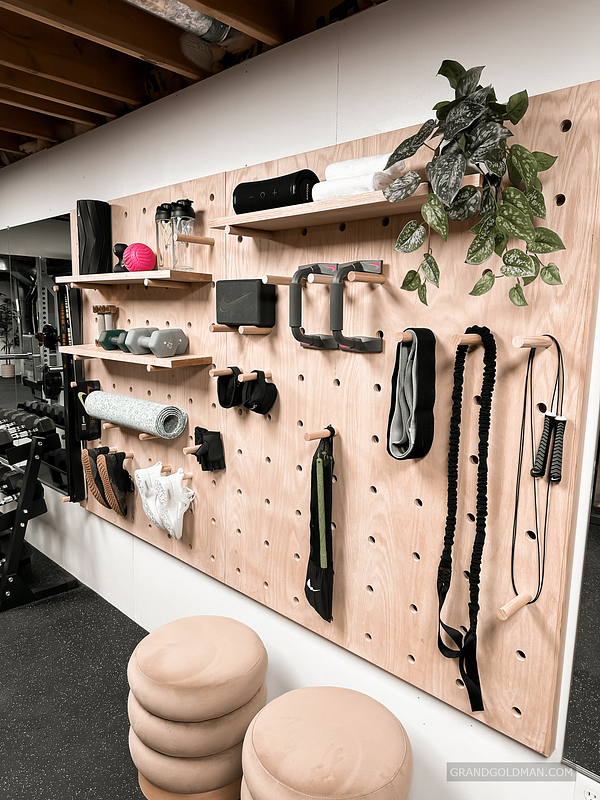
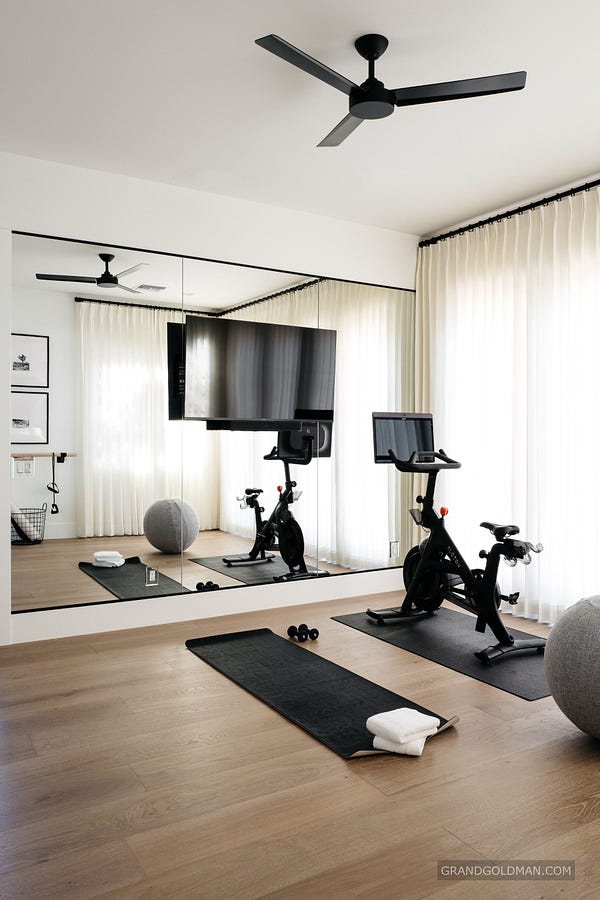
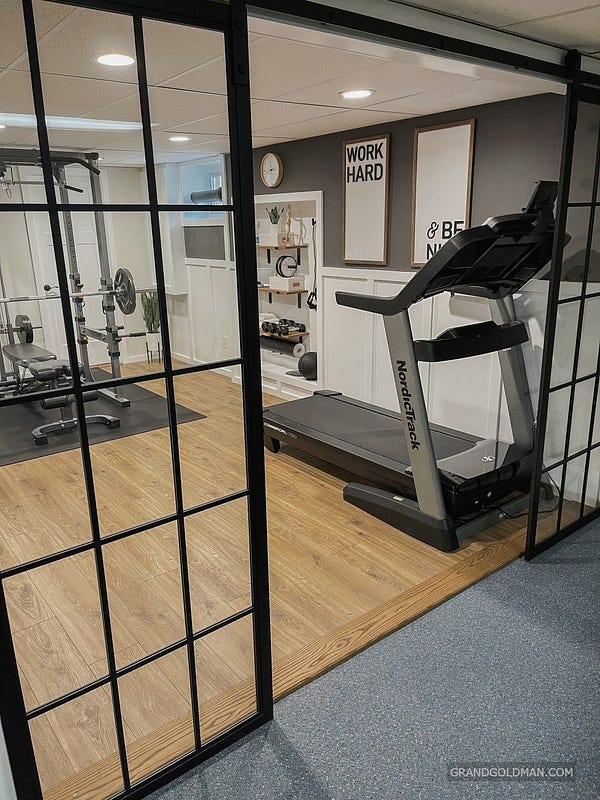

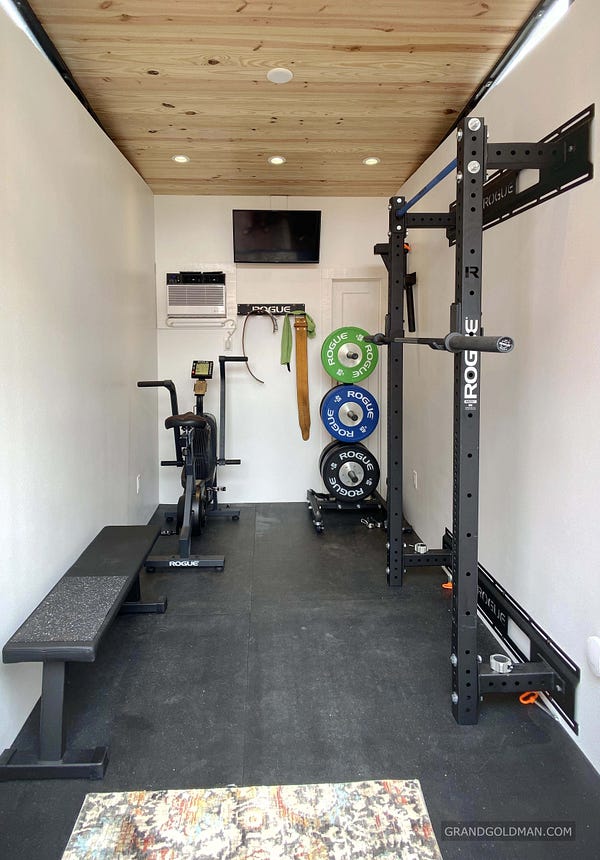





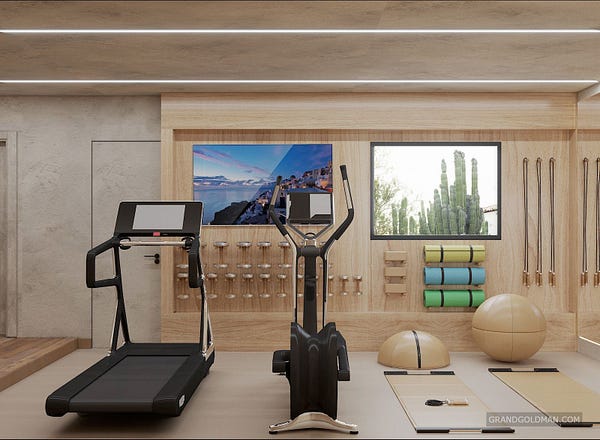

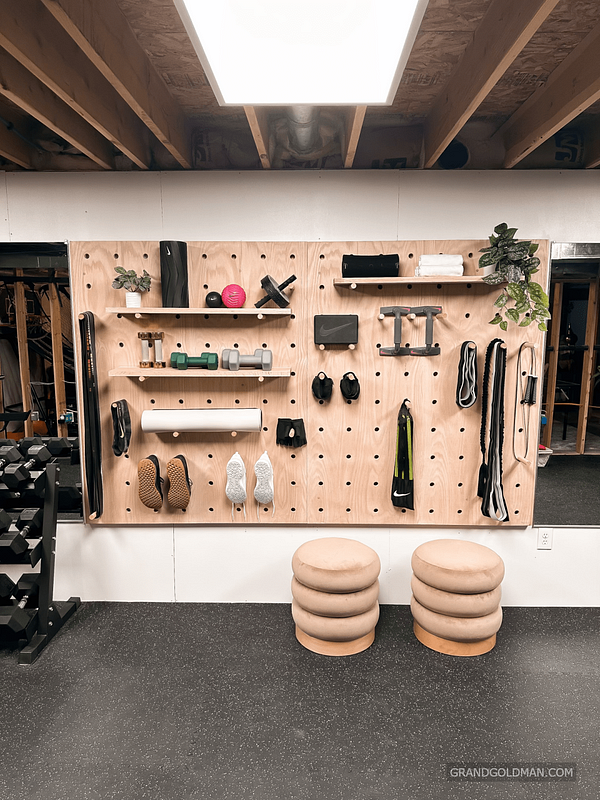
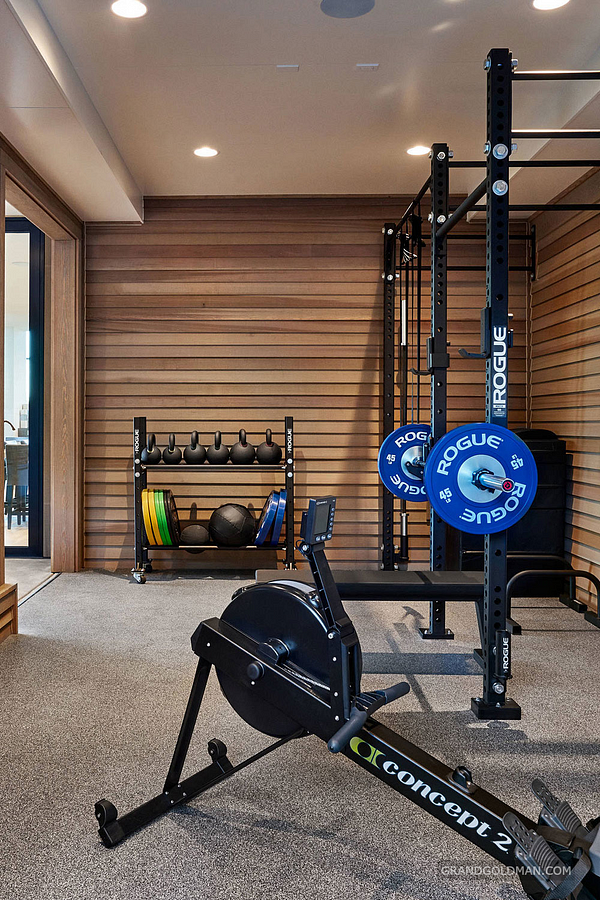



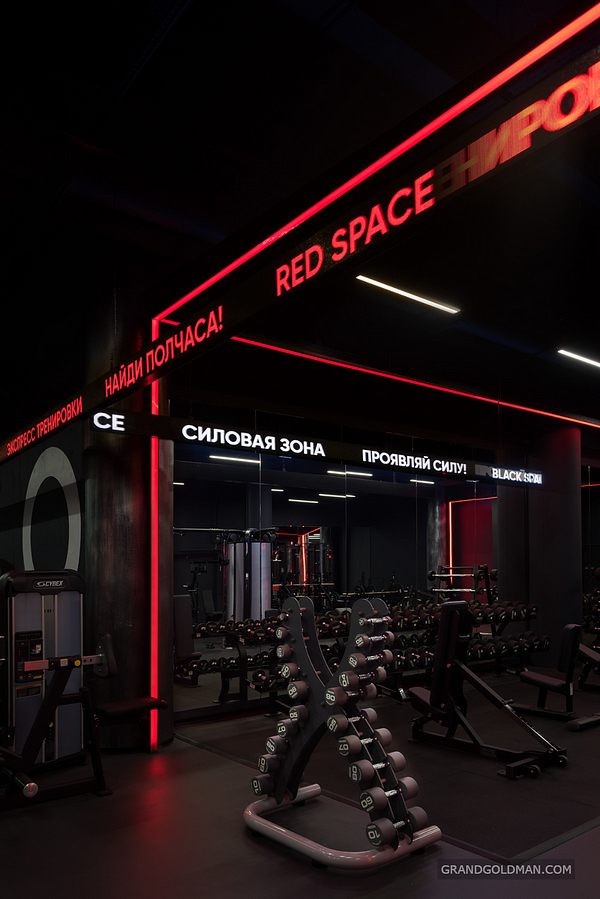
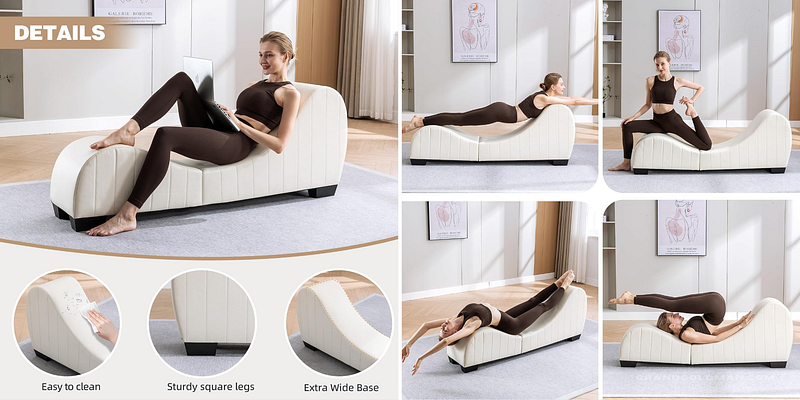






Assembling the Essentials: Choosing the Right Equipment
The heart of any home gym lies in the selection of suitable equipment, tailored to your fitness goals and preferences. To navigate this process effectively, consider the following factors.
1. Exercise Preferences
Identify your primary workout activities, whether weightlifting, cardio, yoga, or a combination of these. This will guide your equipment choices.
2. Space Considerations
Assess the available floor space in your basement. This will determine the size and arrangement of equipment to ensure a functional and comfortable workout area.
3. Budget
Set a realistic budget for equipment purchases. Consider renting or borrowing equipment to trial before investing extensively.
4. Durability and Quality
Invest in high-quality equipment that can withstand regular use and maintain its integrity over time.

Equipment Recommendations
A. Weightlifting Equipment
A weight rack, barbell, and adjustable weight plates are essential for strength training exercises. Consider cable machines, dumbbell sets, kettlebells, and resistance bands for additional variety.
B. Cardiovascular Equipment
Treadmills, elliptical machines, stationary bikes, and rowing machines offer excellent options for cardio workouts.
C. Functional Fitness Equipment
Pull-up bars, medicine balls, stability balls, and plyometric boxes can enhance functional fitness routines.
D. Flooring
Durable flooring, such as interlocking mats or rubber tiles, is crucial for protecting the basement floor and providing a comfortable workout surface.
E. Storage Solutions
Organize your equipment effectively using wall-mounted racks, shelves, and bins to maximize space and maintain a tidy workout area.
Best Cable Machines | Best Flooring | Best Equipment for Limited Space | Best Sissy Squat Machine | Best Treadmill | Best Adjustable Dumbbells | Best Weight Bench | Best Pull Up Bar | Best All-in-one Home Gym | Best Exercice Bike
Home Gym Safety Tips | 15 Reasons to Get a Smart Home Gym | Smart Home Gym Setup | Smart Home Gym Guide | Basement Gym Ideas | Machines worth | HomeGym vs Normal Cost | Leg Press for Glutes | Sissy Squat Tutorial | SincMill SCM-1148L Review | Curl & Specialty Bars | Dumbbells Guide | Weight Plates | Kettlebells | Barbells
50 Creative Home gym ideas for all basement sizes
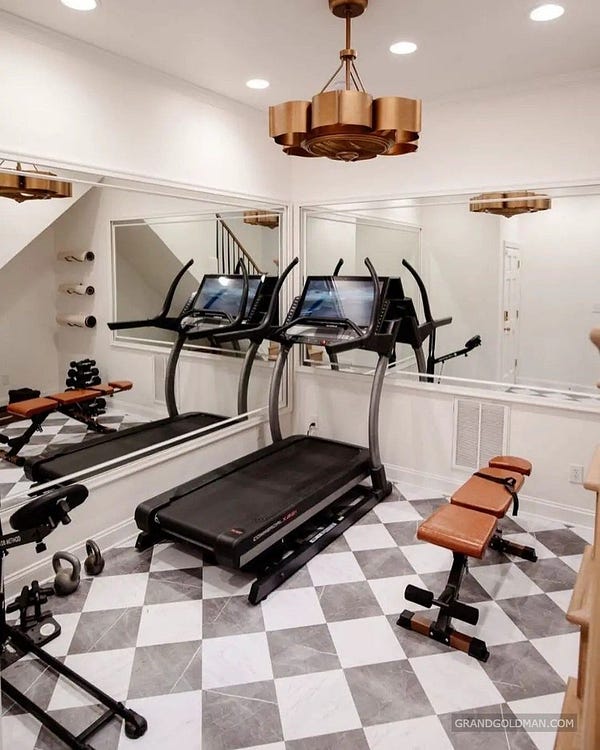
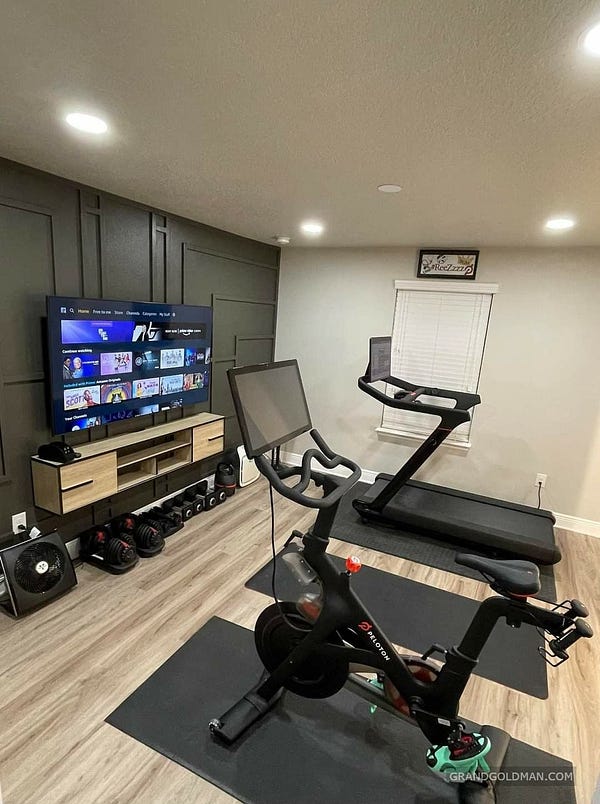
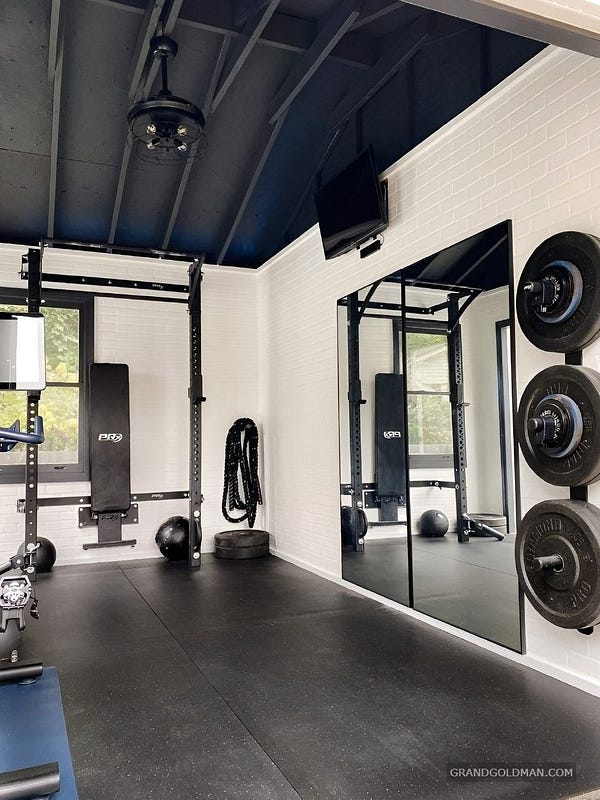




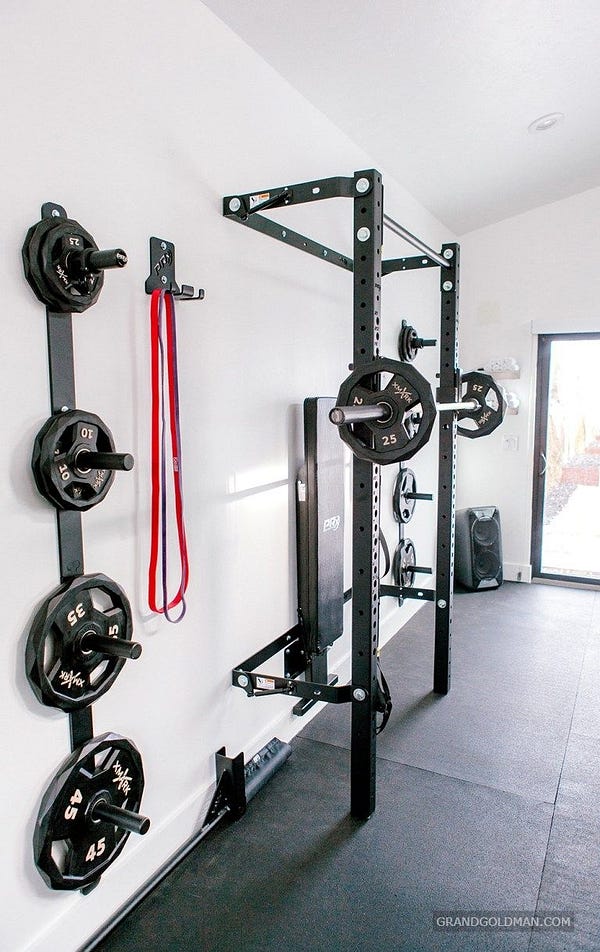

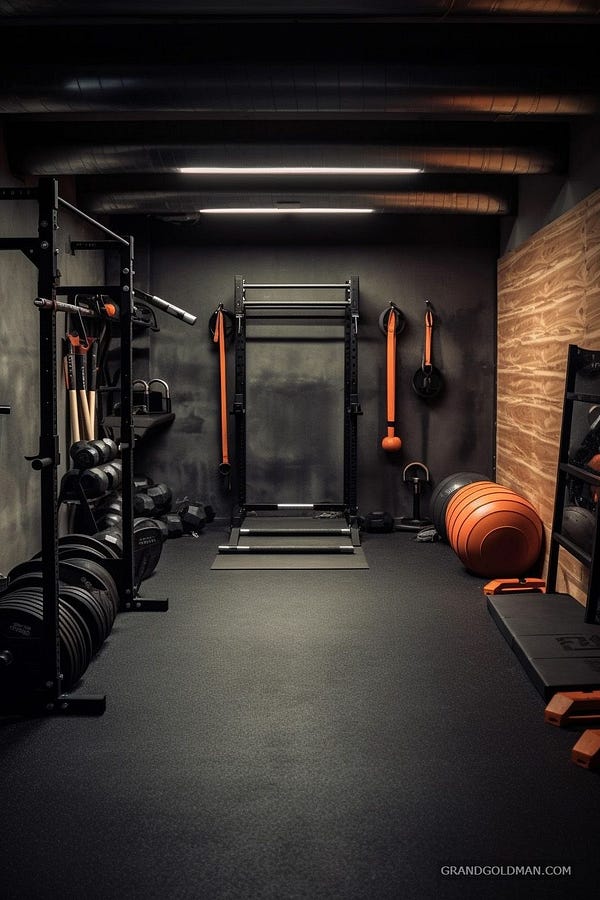

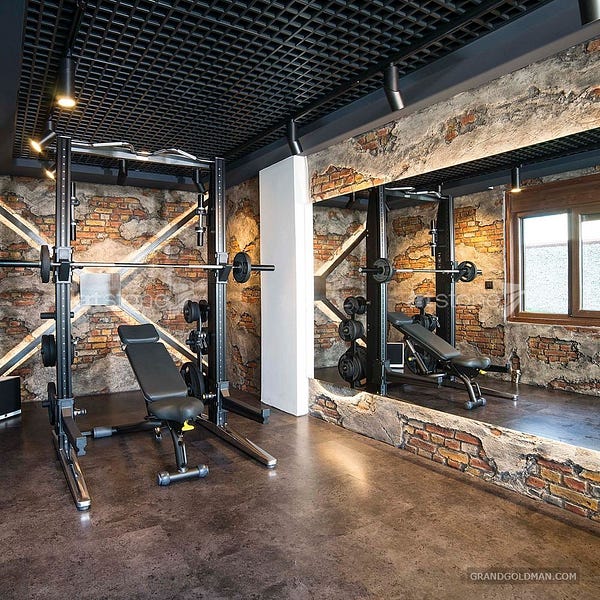




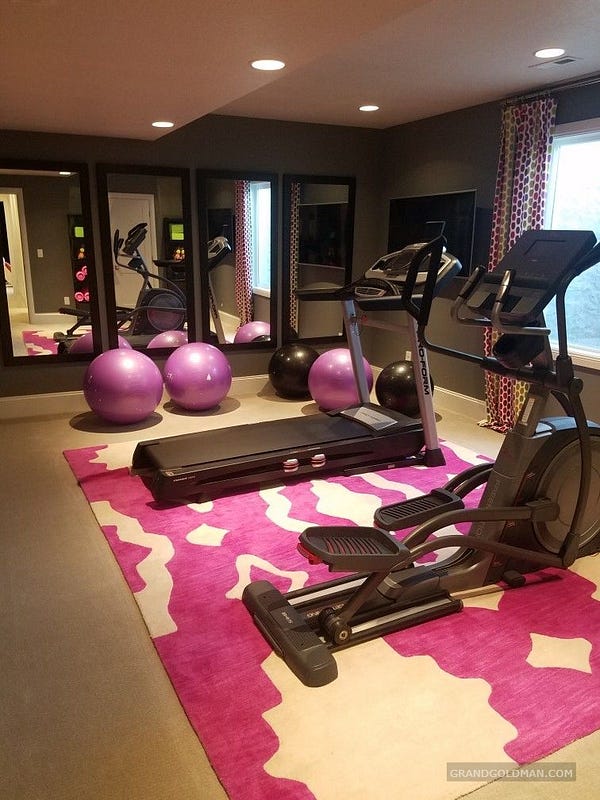


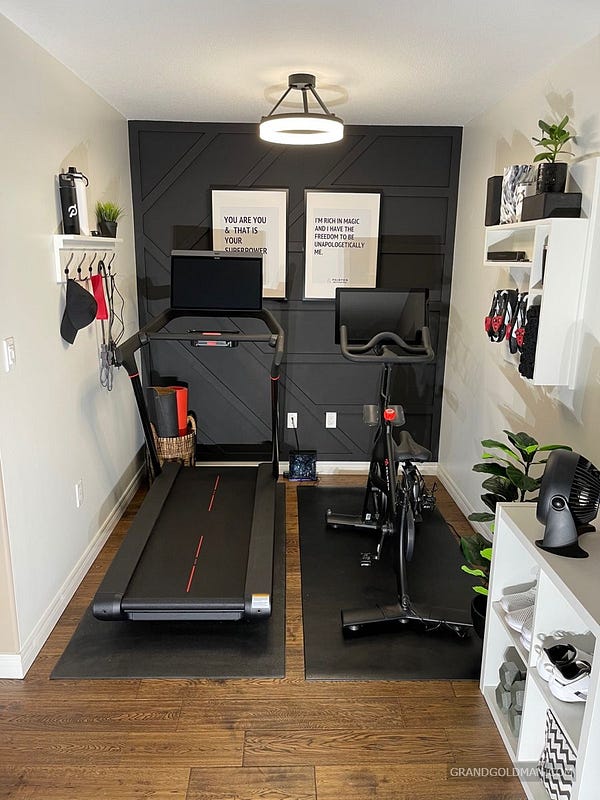
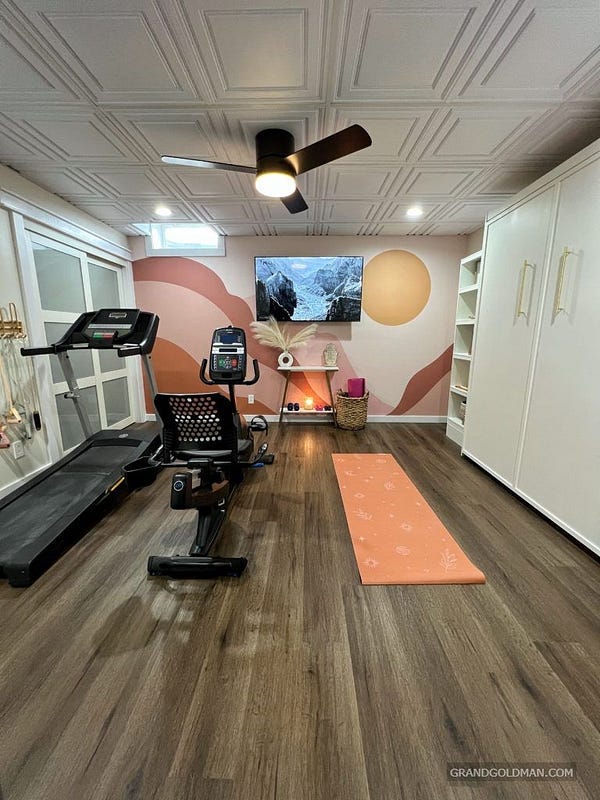
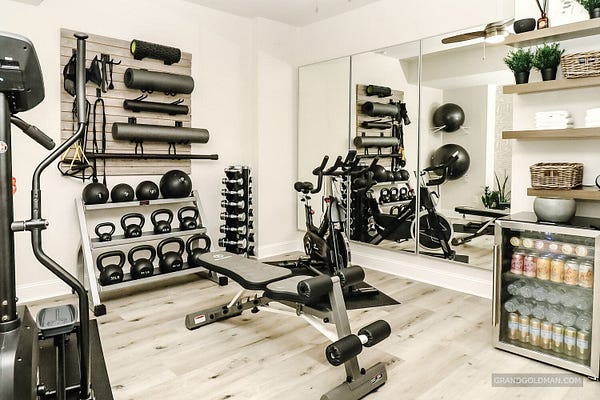
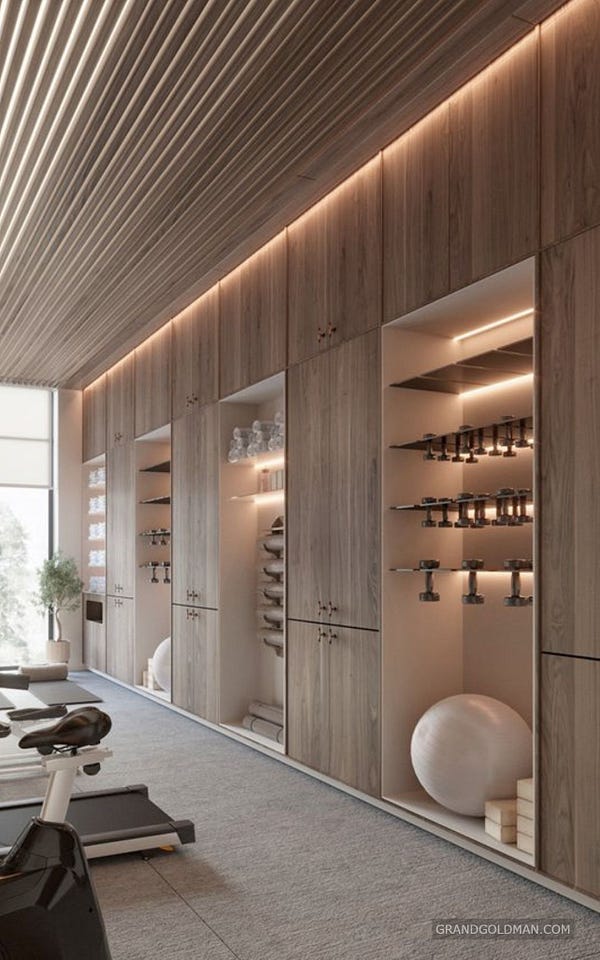




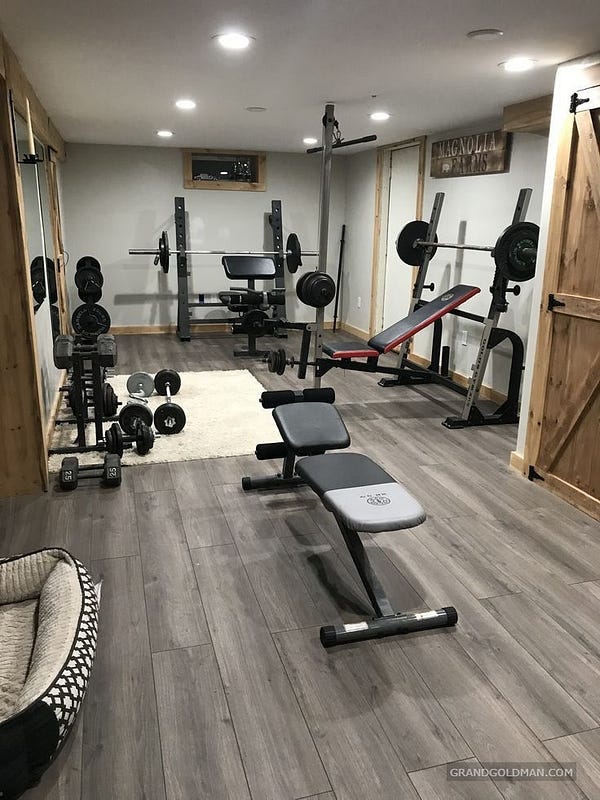



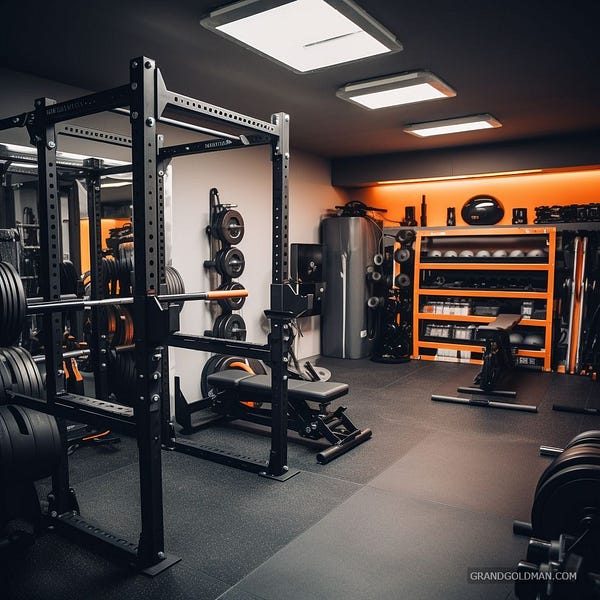
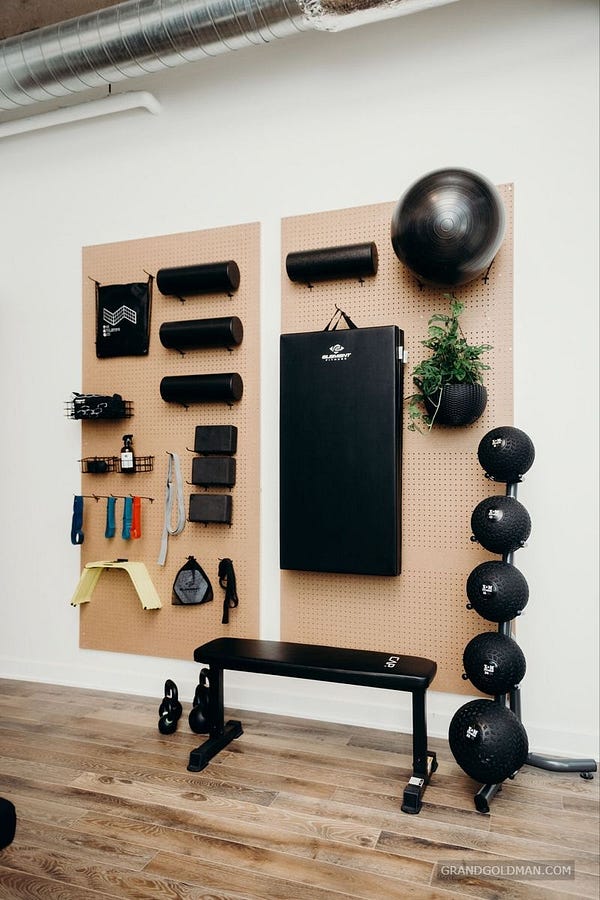


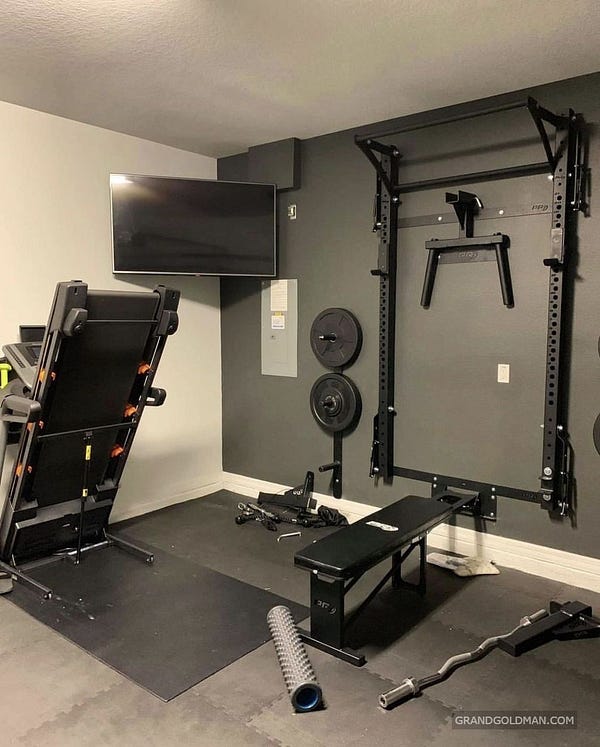


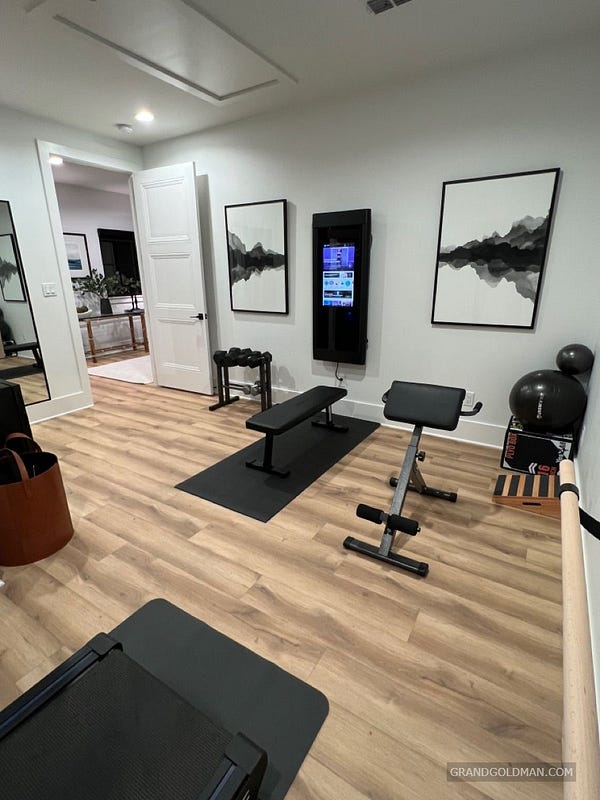
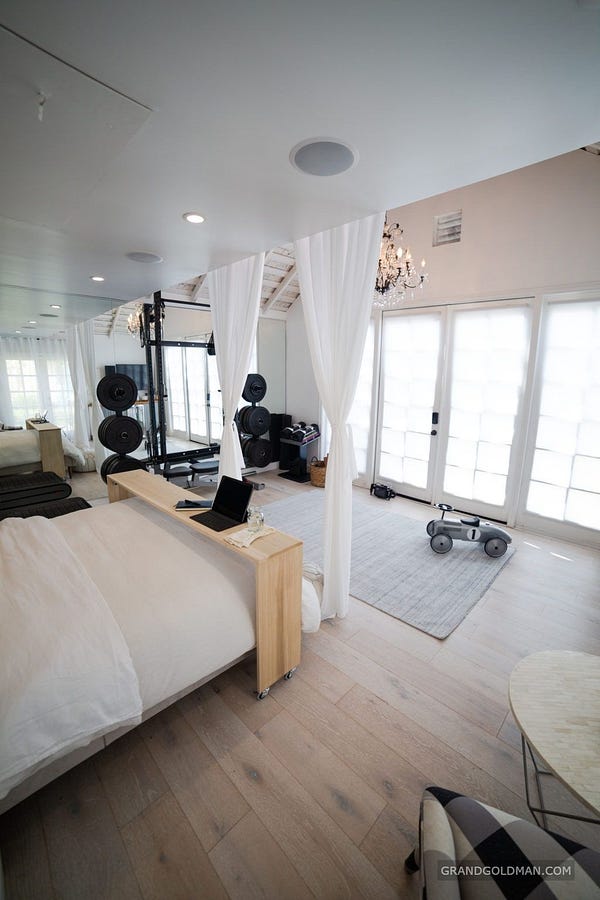
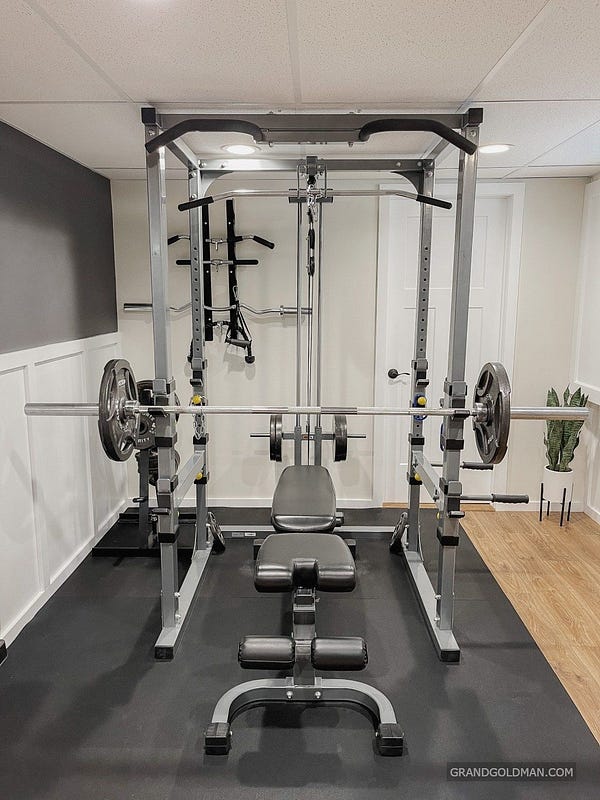
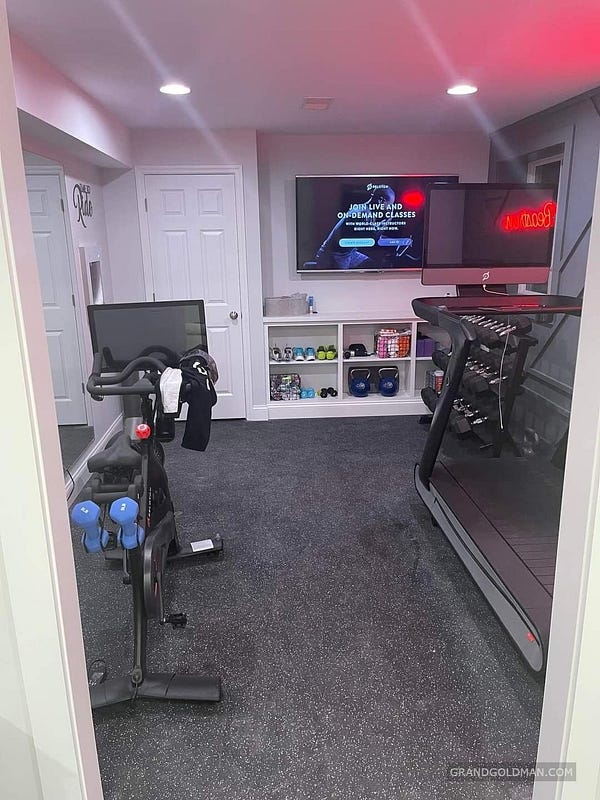


Product Reviews
Best Baby Monitor | Best Underwater Camera | Best Weird Gift Ideas | Best Air Pistol on Amazon | Best All In One Computer | Sistaco Nail Powder Review | PAWFY Review: Dog Pain Relief Chews | Road Trip Mushroom Gummies Review | LACTOMEDI Review | Ernesta Rugs Review | Four Roses Single Barrel Review | Milagro Tequila Review | Oak Essentials Review
Space Planning and Functionality
Effective space planning is paramount to creating a functional and ergonomic basement home gym. Consider the following layout principles:
1. Leave space
Ensure adequate space for unobstructed movement around equipment and between workout stations.
2. Ventilation
Provide adequate ventilation to prevent workout-induced heat buildup and maintain a comfortable environment.
3. Lighting
Implement proper lighting to enhance visibility and safety during workouts. Consider natural light sources, task lighting, and ambient lighting.
4. Soundproofing
If your basement shares walls with other living areas, consider soundproofing measures to minimize noise disturbances.
5. Ergonomic Placement
Position equipment in an ergonomically sound manner to prevent strain and enhance comfort during workouts.
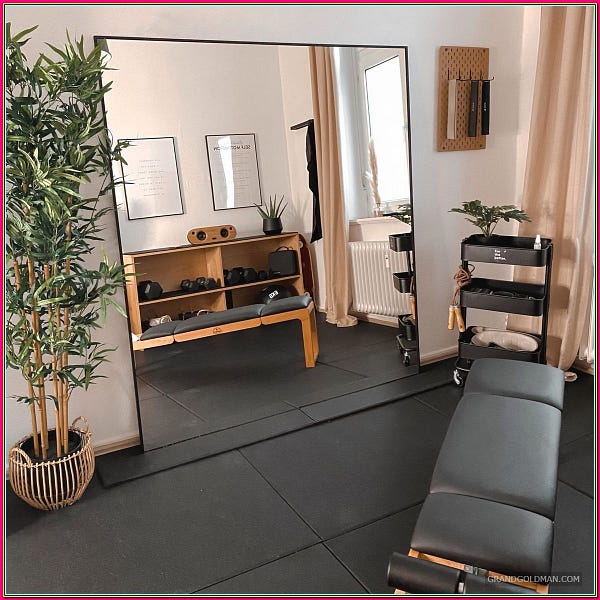
Lighting and Ventilation: Creating a Welcoming Atmosphere
The right lighting and ventilation can transform your basement home gym into a welcoming and invigorating space.
Lighting
Employ a combination of natural light, task lighting, and ambient lighting to create a functional and inviting atmosphere. Ambient lighting can be achieved through overhead fixtures, wall sconces, or dimmers. Task lighting, such as LED Bulbs or LED strips, can illuminate specific workout areas.
Ventilation
Address ventilation concerns to maintain a comfortable and breathable workout environment. Consider installing ceiling fans, exhaust fans, or window vents to promote airflow and prevent workout-induced heat buildup.
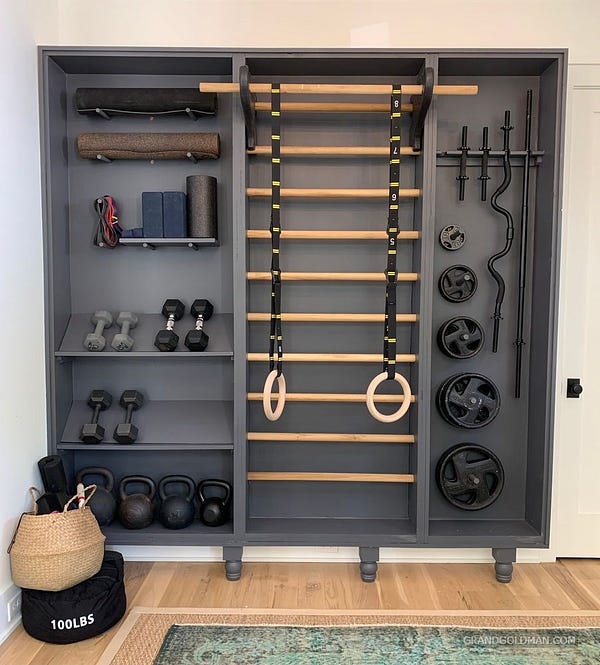
Decor Tips: How to Enhance the Ambiance
Personalize your basement home gym with dcor elements that inspire motivation and enhance the overall ambiance.
- Mirrors: Incorporate mirrors to create a sense of spaciousness and enhance self-awareness during workouts.
- Wall Art: Hang motivational quotes, inspirational posters, or artwork that resonates with your fitness goals and personal style.
- Functional Storage: Incorporate storage solutions to keep equipment neatly organized and out of sight when not in use. This can include wall-mounted racks, shelves, and containers.
- Natural Elements: Introduce natural elements, such as plants or potted greenery, to add a touch of freshness and vitality to the space.
Incorporating Smart Technologies
Incorporate smart technologies to enhance your home gym experience:
- Fitness Tracking Devices: Monitor your progress and track your vitals using wearable fitness trackers or smartwatches.
- Interactive Workouts: Utilize video streaming services or interactive workout apps to access a variety of training plans.
- Sound Systems: Enhance your workout sessions with motivating music or audio programs.

Designing a Multifunctional Space
Consider incorporating multi-functional elements to maximize space and versatility:
1. Multipurpose Equipment
Utilize multifunctional equipment, such as foldable benches or adjustable weight stands, to save space.
2. Storage Solutions with Dual Purpose
Choose storage solutions that double as workout props, such as step stools or wall-mounted storage racks with pull-up bars.
3. Double-Duty Areas
Designate areas for flexibility exercises, yoga, or stretching to create a versatile fitness space.
Personalizing Your Home Gym Sanctuary
Enhance your basement home gym with personalized touches that reflect your unique style and preferences:
1. Color Scheme
Choose a color palette that inspires motivation and creates a calming or energizing ambiance.
2. Personal Accents
Incorporate personal memorabilia, trophies, or sports equipment to add a touch of personality.
3. Customized Nameplate
Add a personalized nameplate or plaque to establish the space as your dedicated fitness sanctuary.

Creating Your Personal Wellness Hub
By following these comprehensive guidelines and incorporating your personal preferences, you can transform your basement into a state-of-the-art home gym, fostering a personalized wellness haven that aligns with your fitness goals and lifestyle.
Home gym ideas for the basement: FAQ
Is gym in the basement good idea?
A basement gym can be a great idea, as it can provide a dedicated space for exercise without taking up valuable square footage on the main floor of your home. However, it is important to consider the potential drawbacks of a basement gym, such as the potential for moisture and humidity, as well as the need for adequate ventilation. If you are considering a basement gym, make sure to address these issues before you start building.
How can I make my basement gym nice?
There are a few things you can do to make your basement gym more inviting, such as:
- Paint the walls a bright color.
- Install mirrors to make the space feel larger.
- Add some plants or other decorative elements.
- Consider installing a sound system to pump up your workouts.
How much space do you need for a basement gym?
The amount of space you need for a basement gym will depend on the type of equipment you plan to use. However, as a general rule of thumb, you should allow for at least 10 feet by 10 feet of space for basic cardio equipment, such as a treadmill or elliptical machine. If you plan to use weightlifting equipment, you will need more space.
Can I work out in my basement?
Yes, you can work out in your basement, but it is important to take some precautions to avoid injury. Make sure to warm up and cool down before and after your workout, and use proper form when lifting weights.

Should home gym be on the basement or main floor?
There is no definitive answer to this question, as the best location for your home gym will depend on your individual preferences and circumstances. If you have the space, a home gym on the main floor may be more convenient, as you will not have to go down stairs to exercise. However, a basement gym can be a good option if you have limited space on the main floor.
Is it OK to sleep in the basement?
There are a few potential health risks associated with sleeping in a basement, such as exposure to mold and dampness. If you are considering sleeping in your basement, it is important to make sure that the space is properly ventilated and dry.
What is the best flooring for a home gym?
The best flooring for a home gym will depend on your individual needs and preferences. However, some good options include:
- Interlocking rubber tiles.
- Concrete with a rubber mat.
- Horse stall mats.
How do you vent a basement gym?
There are a few different ways to vent a basement gym, such as:
- Installing a ceiling fan with an exhaust feature.
- Opening a window when the weather is nice.
- Using a dehumidifier to reduce humidity.
What are the cons of basement room?
There are a few potential drawbacks to using a basement as a home gym, such as:
- Moisture and humidity.
- Lack of natural light.
- Limited space.
- Potential for noise disturbances.
How do I keep my basement gym clean?
Keep your basement gym clean by:
- Wipe down equipment after each use.
- Sweep and mop the floor regularly.
- Aerate the space to remove moisture.
Can you deadlift in your basement?
Yes, you can deadlift in your basement. However, you will need to make sure that the floor is strong enough to support the weight of the barbell.
Is building a home gym worth it?
Whether or not building a home gym is worth it depends on your individual needs and preferences. If you are a serious fitness enthusiast who does not have access to a gym, a home gym can be a great investment. However, if you only work out occasionally, it may not be worth the cost and effort to build a home gym.
Is concrete floor good for gym?
Concrete can be a good option for a home gym floor, as it is strong and durable. However, concrete can also be cold and hard, so you may want to consider using a rubber mat or rug to make it more comfortable to work out on.

Why indoor gym is better than outdoor?
There are a few reasons why an indoor gym may be better than an outdoor gym, including:
- Controlled climate: Indoor gyms typically have a controlled climate, so you don't have to worry about the weather.
- Convenience: Indoor gyms are often located closer to home or work, making them more convenient to access.
- Variety of equipment: Indoor gyms typically have a wider variety of equipment than outdoor gyms.
- Safety: Indoor gyms typically have safety equipment, such as mats and spotters, that is not always available outdoors.
What flooring to use for basement gym?
The best flooring for a basement gym will depend on your individual needs and preferences. However, some good options include:
- Interlocking rubber tiles: These tiles are affordable and easy to install. They are also shock-absorbent and moisture-resistant.
- Concrete with a rubber mat: This is a more durable option that can accommodate heavier weights.
- Horse stall mats: These mats are thick and heavy-duty, making them ideal for deadlifting and other high-impact exercises.
How do I soundproof my basement gym?
There are a few ways to soundproof your basement gym, such as:
- Installing soundproof drywall or acoustic panels.
- Using a soundproof door.
- Adding rugs and carpets to absorb sound.
How to make a basement gym inviting?
There are a few things you can do to make your basement gym more inviting, such as:
- Paint the walls a bright color.
- Install mirrors to make the space feel larger.
- Add some plants or other decorative elements.
- Consider installing a sound system to pump up your workouts.
What is the minimum room size for a home gym?
The minimum room size for a home gym will depend on the type of equipment you plan to use. However, as a general rule of thumb, you should allow for at least 10 feet by 10 feet of space for basic cardio equipment, such as a treadmill or elliptical machine. If you plan to use weightlifting equipment, you will need more space.
How much height do you need for a home gym?
The ideal height for a home gym is 8 feet. However, you can get by with a height of 7 feet, as long as you have enough clearance to use your equipment without hitting your head.
What thickness should a home gym floor be?
The thickness of your home gym floor will depend on the type of equipment you plan to use. However, as a general rule of thumb, you should use a floor that is at least 1 inch thick.
How do I maximize space in my small home gym?
There are a few ways to maximize space in your small home gym, such as:
- Using multi-functional equipment: This type of equipment can be used for multiple exercises, saving you space.
- Hanging equipment from the ceiling: This can free up floor space.
- Using storage solutions that double as workout props: This can help you keep your gym organized and clutter-free.
How to build a home gym in a small space?
There are a few things to keep in mind when building a home gym in a small space, such as:
- Choose compact equipment to save space.
- Use wall-mounted equipment to free up floor space.
- Create a dedicated workout to stay focused and motivated.
How do I plan a home gym?
There are a few steps involved in planning a home gym, such as:
- Determine your fitness goals: This will help you choose the right equipment and layout.
- Measure your space: This will help you select equipment that fits your available space.
- Create a budget: This will help you avoid overspending.
- Choose your equipment: This will depend on your fitness goals and budget.
- Design a workout plan to stay focused and motivated.
- Install flooring: This will protect your floor from damage.
- Add storage solutions: This will help you keep your gym organized and clutter-free.
- Hang mirrors: This will help you improve your form.
- Keep the space motivated with inspiring posters and art: This will help you stick with your wellness habits.
Best Webcams for Streaming and Working | Best Lenses for Sony and Canon Mirrorless Cameras | Best Polaroid Instant Camera | Best Webcams for Streaming & Working

Home Gym Ideas for the Basement Guide













